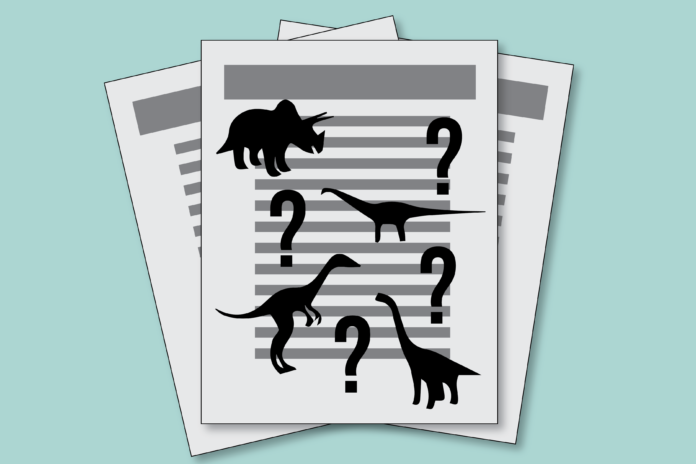Science journalism’s obligation to truth
After The New Yorker published “The Day the Dinosaurs Died,” which details the discovery of a fossil site in Hell’s Creek, North Dakota, by Robert DePalma — a Kansas State PhD student and paleontologist, debates and discussions across the country arose over the article.
Douglas Preston’s writing about the discovery lauds it as one of the most important discoveries for paleontology in recent memory. Researchers and professors alike in the paleontology community, however, have objected to the presentation of this discovery in The New Yorker, claiming it to be sensationalized and misinformed.
Soon after the article went online, a scientific paper was published in Proceedings of the National Academy of Sciences. This paper was the peer-reviewed account of DePalma’s findings in Hell’s Creek. The piece generated even further controversy, given that many of the findings discussed in The New Yorker article were not in the actual peer-reviewed article published in a respected scientific journal.
Sandra Carlson, a professor and researcher at UC Davis who studies paleontology, has helped lead a discussion on campus regarding the discovery, the article and the debate that followed. One of her biggest concerns was the timing of The New Yorker article and the irregular process by which the paleontological find was made publicly known.
“There were a lot of things about it, from a scientist’s point of view, that just kind of rankled me,” Carlson said. “The general public got to read about this through The New Yorker before the scientific community was even introduced to it. It’s one thing if you have a paper and that’s published and has been peer reviewed and then you have a more popularized article. It was the wrong order.”
Carlson explained that by contacting a fiction writer to do the story, DePalma was advertising his find with somebody not in the scientific field. She claims this is a “weird” thing to do, unless the scientist simply wants fame.
Pushing past her concerns about the journalistic process, Carlson also felt the article contained misleading details. She felt that the paper published in the scientific journal, PNAS, was sedimentology in nature, while The New Yorker article only addressed the dinosaurs.
“There’s plenty of interesting stories that you could present from this — just from the fish alone and from the plant fossils,” Carlson said. “The fact that it was all pulled to the dinosaurs [is] because when people think of the End-Cretaceous extinction event, they think of dinosaurs, not these other organisms.”
Carlson expressed her opinion that The New Yorker article was a journalistic misfire, skirting regular and ethical ways of disseminating scientific information to both the public and the scientific community.
What does good scientific journalism look like to her, then?
“A [good] journalist who wants to find an interesting story should start with the peer-reviewed literature,” she said. “Write things that come out recently. And then do your best to both try to get an interview with one of the authors of the paper. Try to get them to expound more on what’s in the paper. Try to get them to talk about the greater significance of it, if it’s not in the peer reviewed paper.”
But in her view, scientific journalism need not be dry and strictly factual — the information should be engaging and written in such a way as to inspire and inform the public.
“It’s really important for scientists to be able to communicate with journalists, and get that information out,” Carlson said. “And not just get it out in a factual manner — to paint a picture that’s accurate, that doesn’t go too far.”
Written by: Aaron Levins — features@theaggie.org




